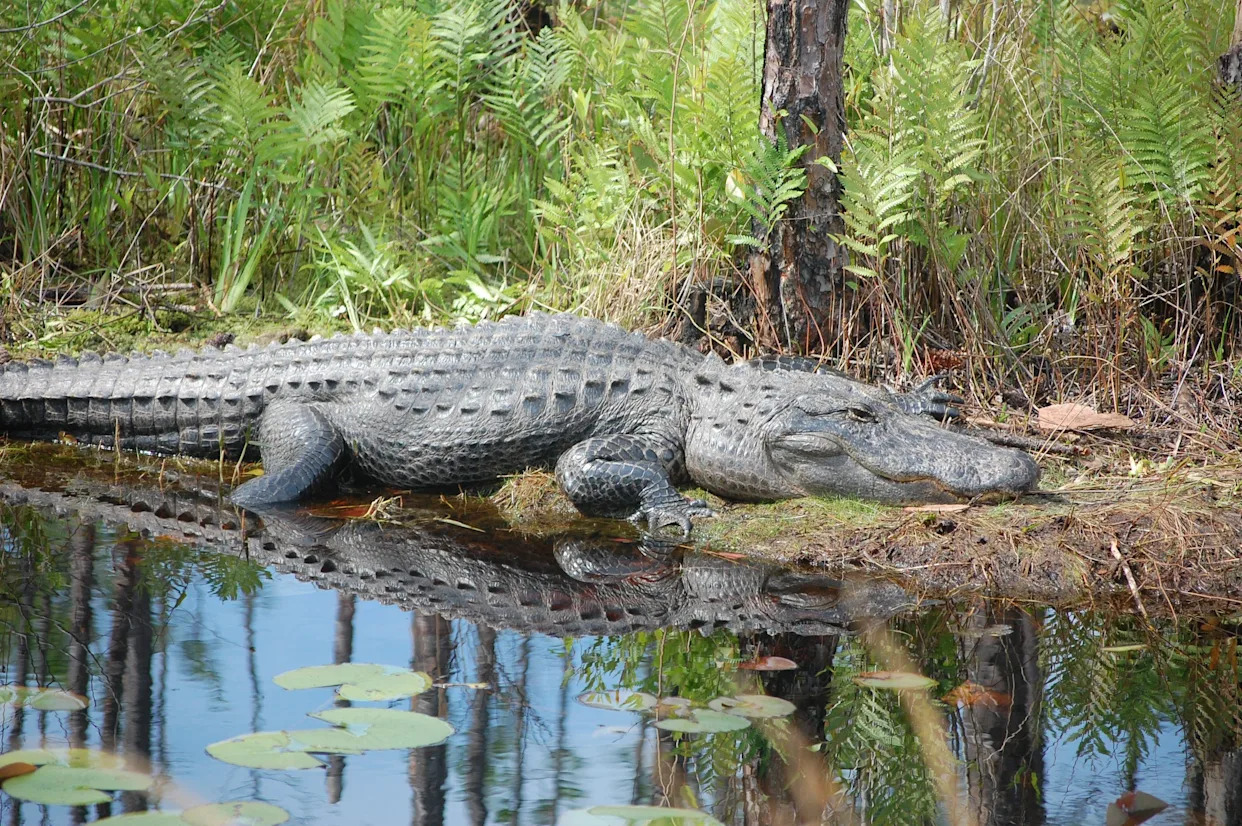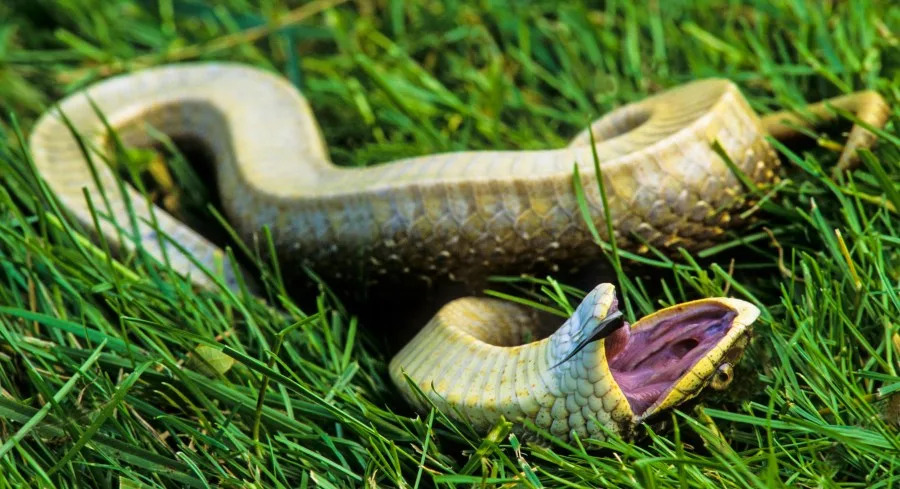
If seeing viral videos of alligators on front porches, golf courses, in pools or at the beach while scrolling through social media feels normal to you, you just might be a Floridian.
About 1.3 million alligators call Florida home — but where do they live when they aren't popping up where they aren't welcome?
If you live here, you likely know you have to coexist with alligators. So long as you keep your distance and never feed one if it crosses your path, you should be fine.
There are, however, risks, especially when it comes to water. The most alligator-infested river that runs throught the state has more than 5,000 alligators estimated to be living in it.
Here's an estimate of how many alligators live in Florida, a list of the top five most alligator-infested rivers in the state and some safety tips.
How common is it to see an alligator in Florida?
Alligators are very common in Florida, with more than a million living in the state.
Each year, the Florida Fish and Wildlife Conservation Commission takes a census of 50 alligator-infested places in Florida to gauge how many alligators are living in the state. The FWC says it enlists the help of scientists and biologists who go out on airboats at night to count how many glowing sets of red eyes they see floating on the water.
Counting every gator is not possible, so the exact count and some math magic are used to estimate what the total population likely is for some lakes.
"Alligators occur in all 67 counties in Florida and can be found in practically all fresh and brackish water bodies and occasionally in salt water," according to the FWC.
"Although exact population figures are not known, Florida has a healthy and stable population of about 1.3 million alligators of every size. This population estimate is based on an estimated 6.7 million acres of suitable habitat."
Top 5 most alligator-infested rivers in Florida
Here is a list of the five most gator-infested rivers in the Sunshine State, according to an October 2024 post on A-Z Animals blog:
St. Johns River: The St. Johns River is estimated to have more than 5,100 gators lurking in its waters. It's the longest river in Florida, spanning 310 miles, excluding the Chattahoochee River, which flows for 430 miles and is shared with Georgia. The St. Johns is also one of the few rivers in the U.S. that flows north instead of south. The river flows from Blue Cypress Lake in Indian River County and empties into the Atlantic Ocean east of Jacksonville in Duval County.
Kissimmee River: The Kissimmee River is estimated to have more than 2,380 gators in it. It is 134 miles long, flowing from East Lake Tohopekaliga in Osceola County, which is around a 20-minute drive from the city of Kissimmee, and emptying into Florida's biggest and most gator-filled lake: Lake Okeechobee, or "Lake O."
Harney River: The Harney River is estimated to have more than 1,570 gators living in it. This is significant because the river is much smaller than the first two on this list by hundreds of miles, only spanning about 10.19 miles in Monroe County, which is one of the three counties that house parts of the Everglades National Park, one of the most gator-filled areas in the state. The river starts in the Everglades and empties into the Gulf of America, previously referred to as the Gulf of Mexico.
Withlacoochee River: The Withlacoochee River is estimated to have just under 600 alligators living in its 141 miles of water. The river, like the St. Johns River, flows north from Green Swamp, which is primarily located in Polk County. Parts of Green Swamp are also in Lake County and Sumter County. The river empties into the Gulf of America (Gulf of Mexico) near Yankeetown, Florida, in Levy County.
Myakka River: The Myakka River is a state-designated wild and scenic river, estimated to have more than 230 alligators living in it. Some reports say the river is around 68 miles long, while others say it's closer to 72 miles long. The river starts near the Manatee-Hardee county line and empties out into the Gulf of America (previously Gulf of Mexico) through the Charlotte Harbor.
Safety tips: What to do if you see an alligator in Florida
Though Florida residents have learned to coexist with alligators, the potential for conflict always exists, according to the Florida Fish and Wildlife Conservation Commission.
The wildlife commission recommends people avoid feeding alligators and to keep their distance if they see one. "Swim only in designated swimming areas during daylight hours. And keep pets on a leash and away from the water," FWC's site says.
While they aren't nonexistent, serious injuries caused by alligators are rare here. If you are concerned about a gator, call the nuisance alligator hotline at 866-392-4286 or visit myfwc.com.
Fatal alligator attacks: Woman killed by alligator in Florida lake ranked No. 2 in state for number of gators.
Can you run away from an alligator? Running zig-zag debunked
Most native Floridians learn as early as preschool to run away in a zig-zag line if they encounter a gator, but this has been debunked. Gators can run fast on land, but only for short distances before they get tired. Simply run away in a straight line.
If you find yourself tempted to take a night swim in a lake, river, pond or any natural body of fresh water, just don't. If the sun is down, the gators are out.
If you're walking or relaxing beside a lake, pond or river with your dog or cat, keep them at least 10 feet away from the shore and on a leash.
This should go without saying, but never feed an alligator. You definitely don't want this wild animal to associate you with food.
Can you shoot an alligator in your yard in Florida?
Don't try to "take care" of any gators yourself. If you don't have a permit to be hunting gators, you can't shoot one. And, depending on where you live, just by firing a gun you may be breaking other local laws.
Under Florida law, it's a third-degree felony to "intentionally kill, injure, possess or capture, or attempt to kill, injure, possess or capture an alligator or other crocodilian, or the eggs of an alligator or other crocodilian, unless authorized by rules of the commission."
The Statewide Nuisance Alligator Program trappers relocate gators under 4 feet long and kill nuisance gators that are longer than 4 feet.
"Relocated alligators often try to return to their capture site," according to the SNAP website. "They can create problems for people or other alligators along the way. If an alligator successfully returns, capturing it again would be necessary and likely more difficult the second time."
This article originally appeared on Palm Beach Post: Gator-infested Florida rivers: Top 5 rivers with the most alligators








Comments